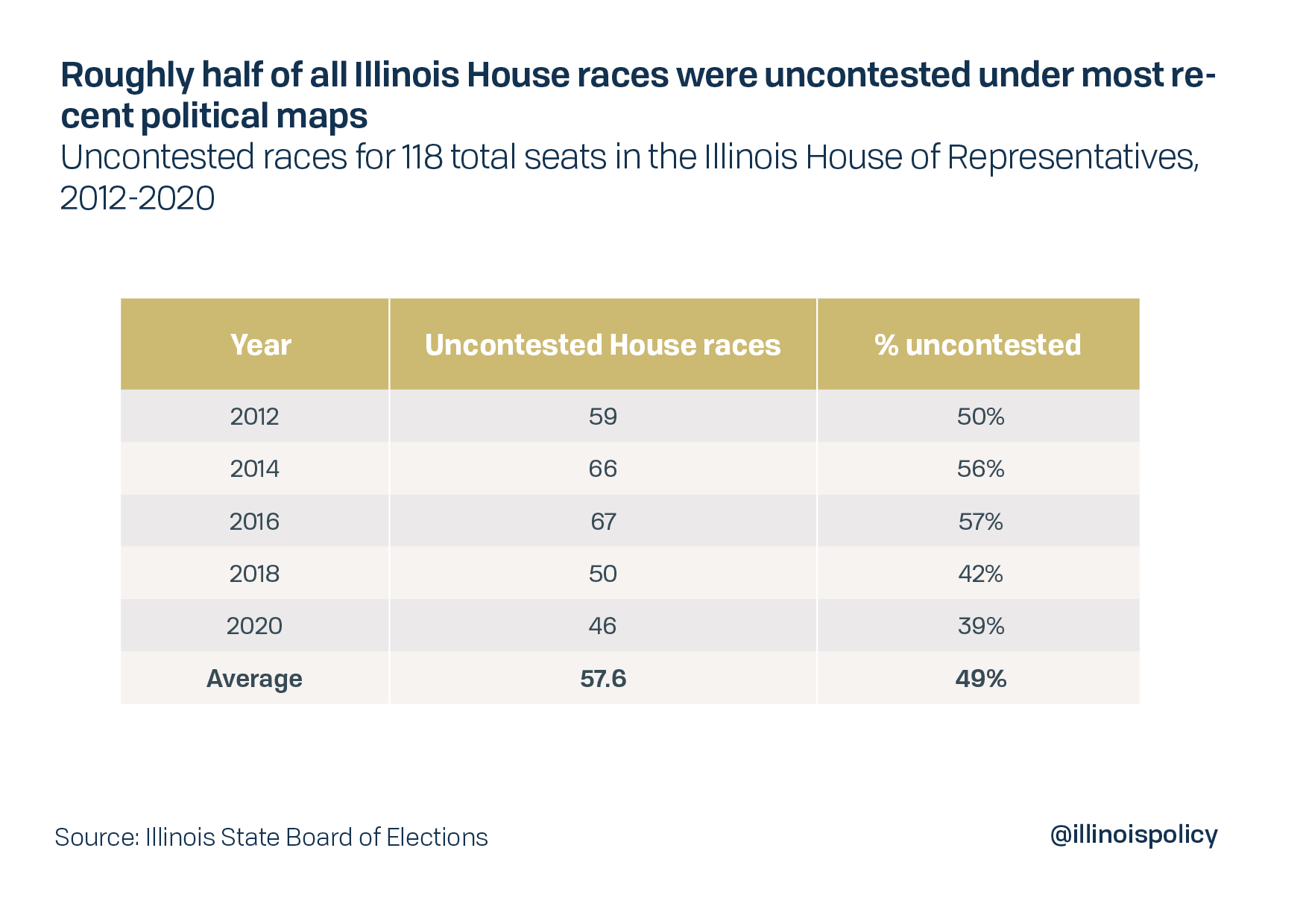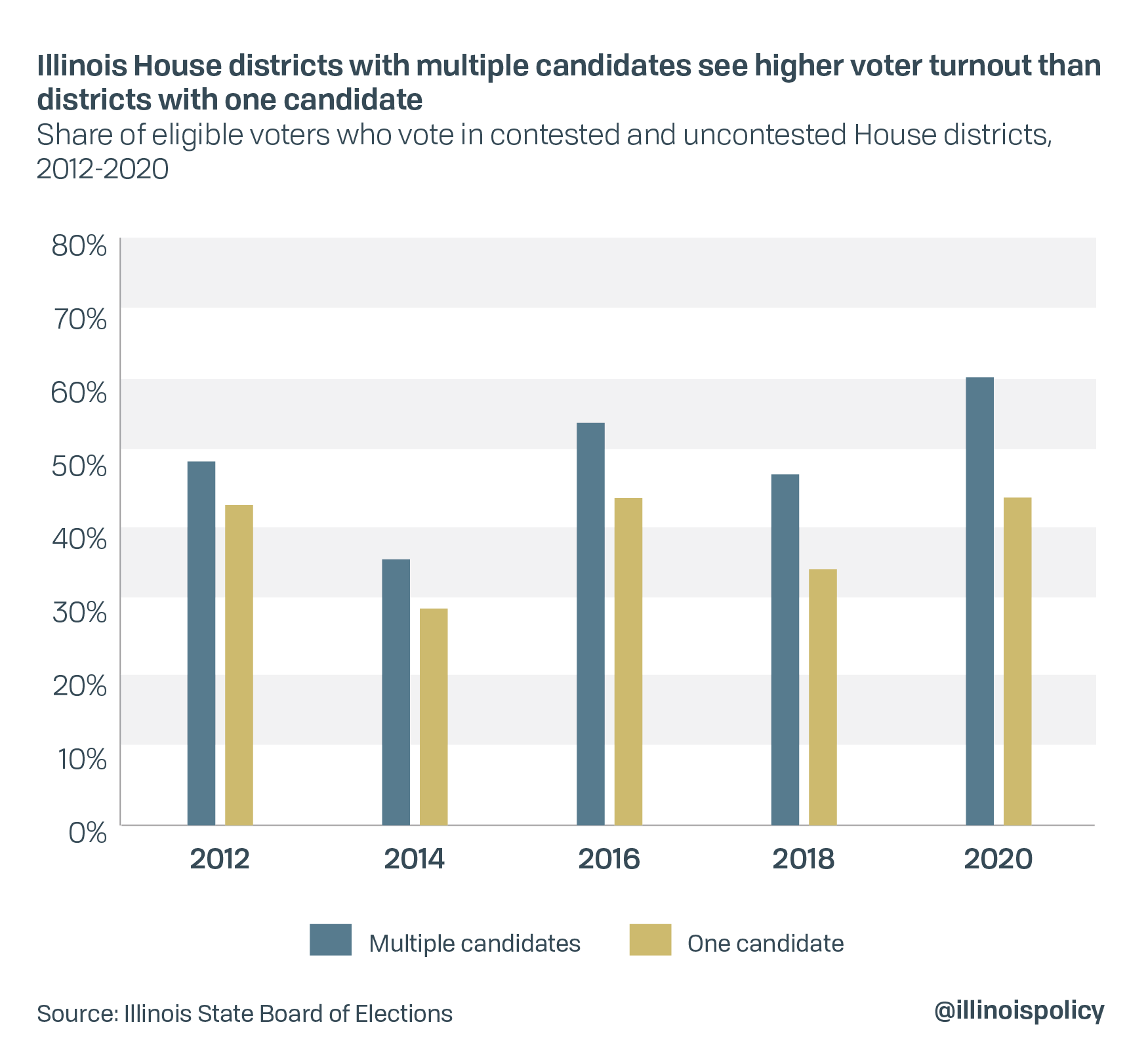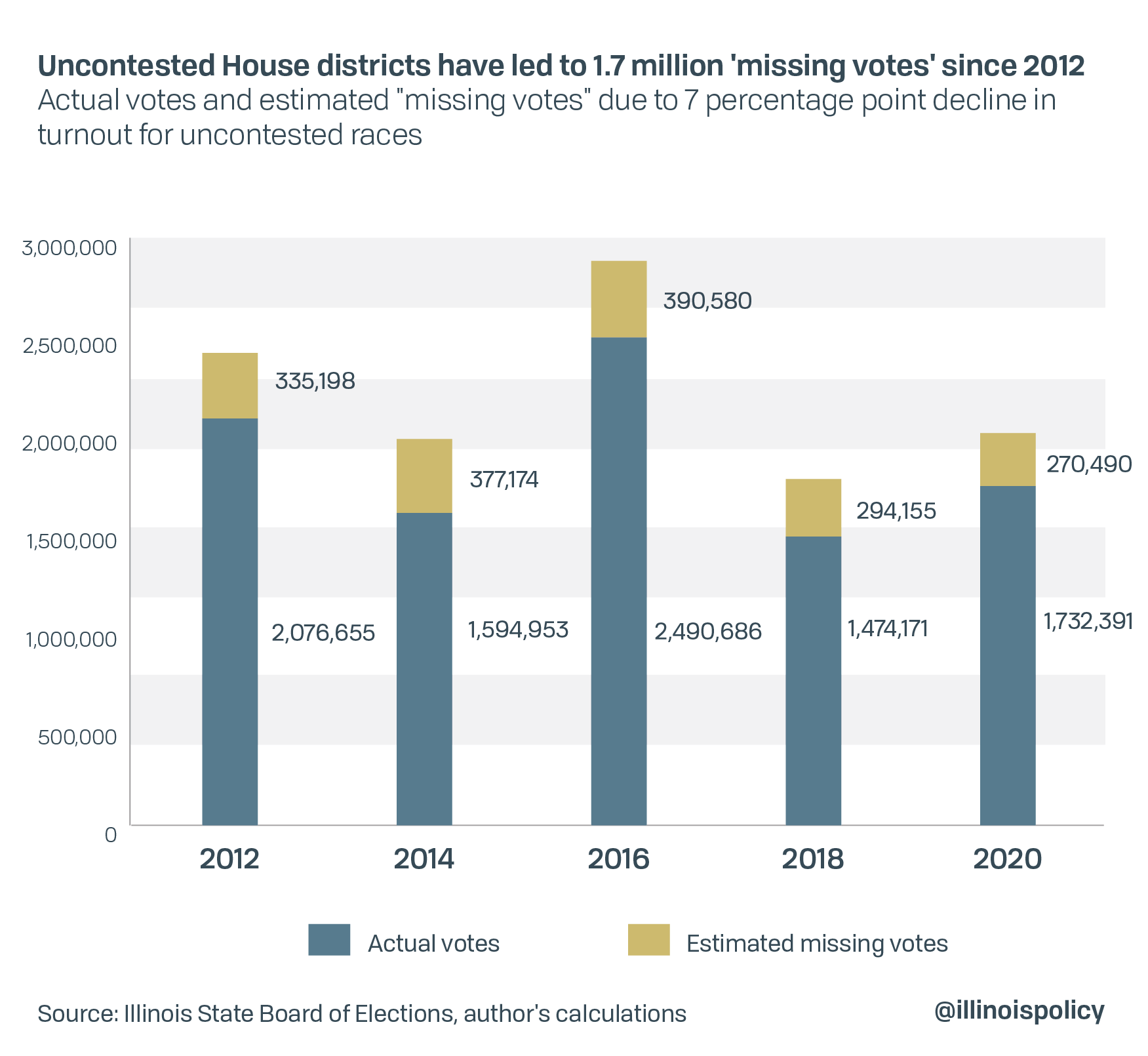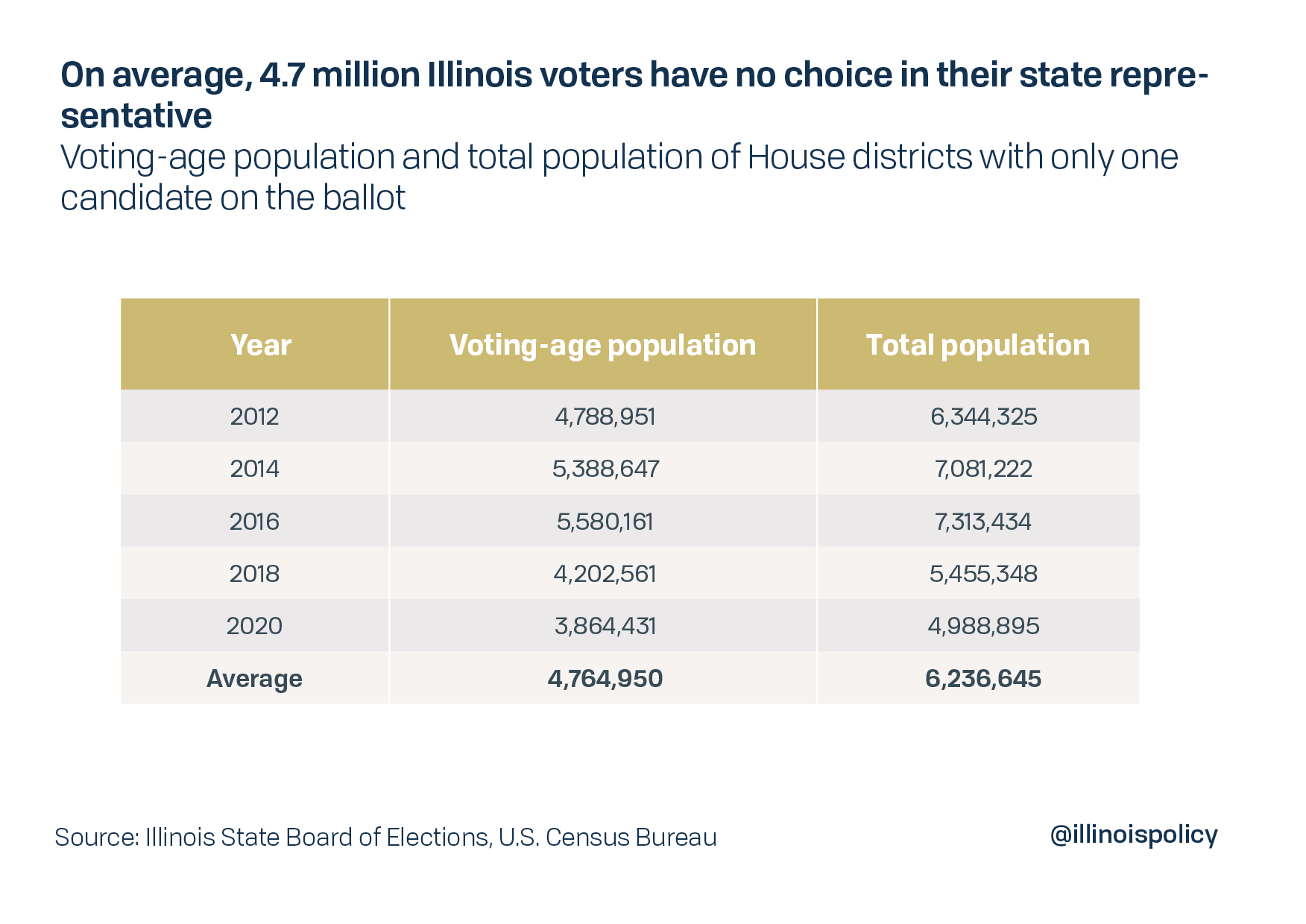(Editor's note: This article was published first at Illinois Policy Institute)
One of the cornerstones of a vibrant democracy is its citizens’ ability to influence government through voting.
As the debate heats up over election laws nationally, Illinois faces its own problems with voter suppression. Despite his repeated promises to veto any partisan maps, Gov. J.B. Pritzker signed both the gerrymandered legislative and judicial maps lawmakers sent to his desk.
Gerrymandering is a practice intended to establish an unfair political advantage for a particular party by manipulating the boundaries of electoral districts. It’s an attempt to upend the democratic process by allowing politicians to pick their voters, rather than voters choosing their elected officials. Gerrymandering matters because it limits voting rights.
In Illinois, political maps drawn by Democrats often force incumbent Republicans into the same district to either face primaries against each other or abandon re-election. On the other hand, many incumbent Democrats face little or no opposition. In some states controlled by Republicans, the same problem exists in the reverse. In the 1990s, when Republicans had control of the mapmaking process in Illinois, they also drew political maps that worked in favor of their own party.
The lack of candidate alternatives on the ballot reduces voter participation. This is because research showsthat as the number of candidates on a ballot increases, electoral participation also increases. The reason is simple: Voters benefit from having clearly differentiated options at the polls on election day, and having a choice in their elected officials gives them a reason to turn out to the polls. Individuals whose preferences do not resonate with the preferences of any of the candidates on the ballot are more likely to abstain. And maps that repeatedly discourage voters, sending them to the sidelines, represent a serious form of voter suppression.
Uncontested and lightly contested elections tend to skew policy in favor of powerful special interest groups at the expense of everyone else. This is because low voter participation makes legislators more susceptible to the influence of lobbyists rather than prioritizing the service of ordinary voters.
WHY VOTER PARTICIPATION MATTERS
Many theories of democracy emphasize that voters reward or punish elected officials by extending or ending their political careers. However, if voter participation isn’t widespread, government accountability can be undermined.
Low voter participation, which tends to be a larger issue in low-income areas, means the interests and policy preferences of low-income residents – who need public services the most – aren’t necessarily represented in legislators’ policy decisions. Research shows that socioeconomic status is related to voting participation and other forms of civic engagement. Individuals with lower levels of formal educational attainment – lower income and more scarce financial resources – are consistently less likely to vote (see Davenport, 2010, for a complete review of the academic literature). However, even if representatives do not act on the direct demands of disadvantaged constituents, higher participation rates can alter the composition of government and thereby influence policy outcomes.
In Illinois, fiscal policy decisions made by state lawmakers over several decades have skewed outcomes in favor of the powerful and well connected at the expense of the state’s neediest residents and its middle class. From fiscal year 2000 to 2021, Illinois spending on pensions for government workers skyrocketed more than 533%. Meanwhile, spending on a range of core government services such as public health and anti-poverty programs dropped by 14%. Illinois’ public pension benefits are far more generous than retirement systems for private sector Illinoisans, with the average career worker collecting more than $2 million in retirement after covering only about 5-6% of the cost while working. Tax hikes to fund pensions have hit Illinoisans of all income levels.
Additionally, research shows that more competitive elections reduce levels of public corruption. Corruption costs Illinois’ economy an estimated $556 million per year.
Enhancing electoral competition by giving Illinois voters multiple options on the ballot could increase effective representation, leading lawmakers to vote more in line with the interests of their constituents. It could also be an important step in reversing Illinois’ culture of political corruption.
Unfortunately, under Illinois’ last legislative map, roughly half of all Illinois House races were uncontested on average. In 2020, for example, only 72 of 118 Illinois legislative House districts and 11 out of 22 Senate districts had more than one candidate on the ballot. That means that many voters were denied the opportunity to support a candidate who is more closely aligned with their own preferences.

Our analysis shows that in the past decade, voter participation was on average 7 percentage points lower in Illinois legislative House districts that had just one candidate on the ballot (see appendix).

Across the state, this lower voter participation due to uncontested races translates to 1.7 million “missing votes” since 2012. In 2020 alone, an estimated 270,000 fewer Illinoisans cast a ballot. Over the life cycle of the last legislative district map, passed in 2011 under the watch of then-House Speaker Michael Madigan, the absence of multiple candidates in every state House race led to 334,000 missing votes on average each election cycle.

On average, more than 4.7 million voting-age Illinoisans live in districts where there was only one option for state representative on the ballot, undermining their representation.

Most of the uncontested legislative races were in the Chicago metropolitan area.
Pritzker signed legislation on June 17 which seeks to make voting more accessible by making Election Day a state holiday in 2022 and expanding the use of curbside voting and mail-in voting, among other changes.
“The legislation I’m signing today further expands access to the ballot box – ensuring all Illinoisans’ voices are heard,” the governor said.
However, the usefulness of increased ballot access will be muted by the lack of choices on those ballots. While making it easier to vote is one way to increase voter participation, Illinoisans’ voices cannot truly be heard until they can choose among competing options.
Unfortunately, Pritzker already broke his promise to veto a gerrymandered map. Independently drawn maps that enhance electoral competition would have gone a long way toward encouraging more candidates to run for statehouse races. But Illinoisans do not need to passively accept the hand that’s been dealt to them.
An organized effort to identify residents interested in running for the Illinois House of Representatives and educate them on the process for gaining ballot access would help counteract the voter suppression that results from gerrymandered political maps. Maximizing the number of candidates with clearly differentiated policy preferences on the ballot, particularly in areas that have historically had just one option, would drive up voter participation while also ensuring that participation includes real choice. The results will be a state government that truly represents the interests of the people who live here.
